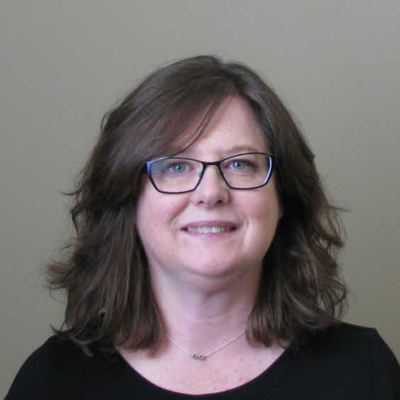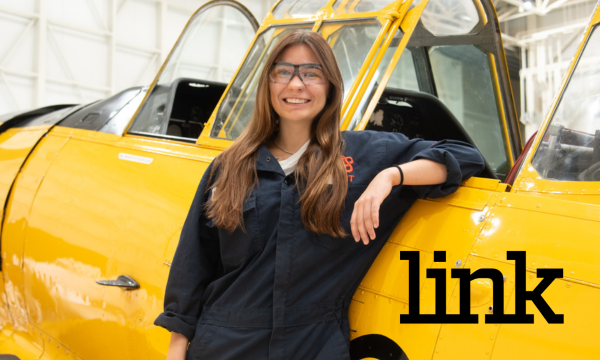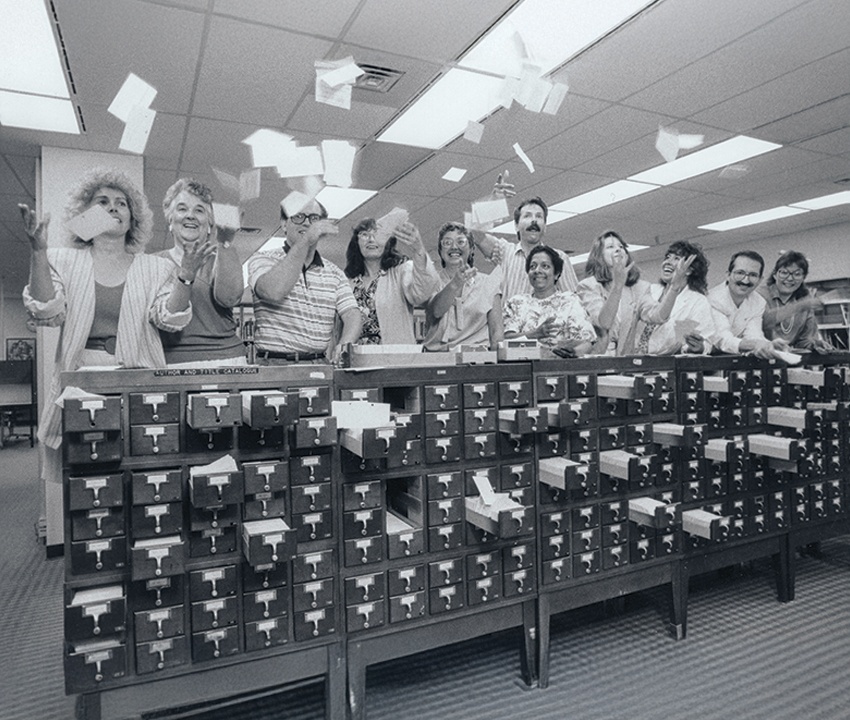Pictured above (Left to right): Gwen Chrapko, Joyce Chester, Dave Webber, Linda MacDonald, Heather Green, Terry Smith, Lorna Rodrigues, Terrie Findlay, Kelly-Marie McLintock, Aeliot Blackwell, and a LIT Summer student
For decades, SAIT staff and students used drawers filled with sturdy index-card-size catalogue cards to find print materials held in the Learning Resource Centre. As computers became more widespread in the 1980s, the Centre began automating its systems for cataloguing, for adding new materials, and for recording materials being checked out.
This photograph captures the excitement as these three systems were integrated for the first time. The new fully automated system meant staff and students could search the collection — during library hours only — using a computer terminal.
SAIT’s library continues to change. Now called the Reg Erhardt Library, it still offers a wealth of print materials but also thousands of e-books, online journals, streaming videos and more — all available to students 24/7, wherever they are. And library staff offer in-person assistance plus an online chat service and video calls for students completing research projects.
From cards to clicks
Acquisitions and Cataloguing Technician Terrie Findlay (LIT '88; shown fourth from the right in this photo from the SAIT Archives) shared some of her memories with LINK of the transition from card catalogues to computer screens — and how the digital age has shaped the Reg Erhardt Library over the last three decades.

Terrie Findlay (LIT '88)
Acquisitions and Cataloguing Technician
Reg Erhardt Library, SAIT
What do you remember from the day the photo was taken?
The photo was staged to get as many of us behind the card catalogue [as possible]. The work-up had been coming for a long time. I had started around the tail end of the project, which had already been going on for at least three or four years.
Do you ever feel nostalgia towards the old catalogue?
Absolutely! I wish I would have been able to take it home, the drawers and stuff. It's interesting to look back to see how general interests have changed over time.
What's interesting is that we still have people coming in and asking where to find the card catalogue. I guess depending on their age, that is what they have been used to.
How does cataloguing today differ from when the computer system was first introduced in 1990?
Not a lot has changed. We still categorize by title, author, and subject but there are a lot more access points with going digital. There is more keyword searching and more Boolean searching, whereas before we would only be able to include up to three categories for searching. When we had catalogue cards, the data was quite static. With being digital, the data record is constantly updating and changing.
What new trends do you see having an impact or influence on how people use the library?
I've observed AI having an impact on the way people use the library to research. Rather than analyzing the search results, individuals are stopping with the top 10 sources that come back from a search.

Like what you are reading?
Find more stories from past, present and upcoming issues of LINK magazine!
Oki, Âba wathtech, Danit'ada, Tawnshi, Hello.
SAIT is located on the traditional territories of the Niitsitapi (Blackfoot) and the people of Treaty 7 which includes the Siksika, the Piikani, the Kainai, the Tsuut’ina and the Îyârhe Nakoda of Bearspaw, Chiniki and Goodstoney.
We are situated in an area the Blackfoot tribes traditionally called Moh’kinsstis, where the Bow River meets the Elbow River. We now call it the city of Calgary, which is also home to the Métis Nation of Alberta.
